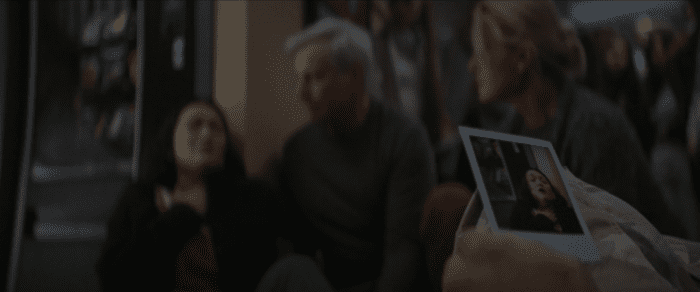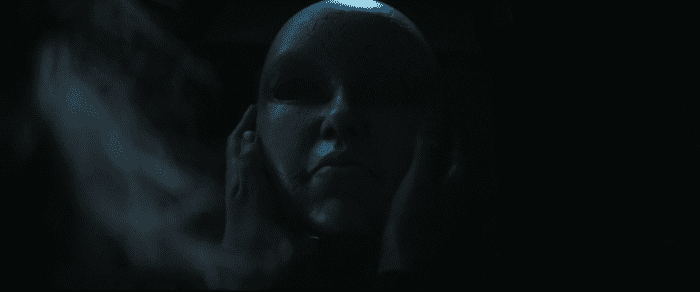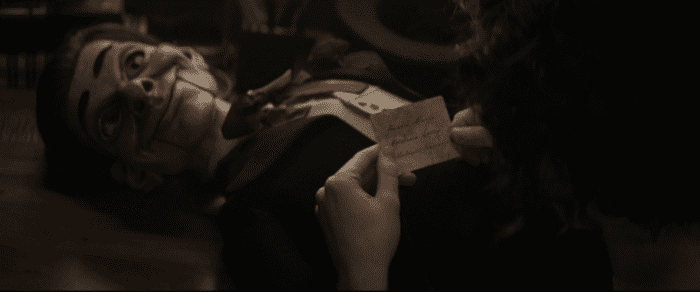The following review contains some spoilers for Disney+/Hulu’s Goosebumps (2023)
Let me let you in on a secret: the best part of Disney+/Hulu’s new Goosebumps series is, oddly enough, how un-Goosebumps it often feels.
Let me explain. While Goosebumps—as part of what I consider to be the holy trinity of entry-level kid’s horror along with Scooby-Doo and Courage the Cowardly Dog—is probably the series that R.L. Stine is best known for, all the cool kids know that the Fear Street books are where it’s really at. While the easiest distinction between the two series is their target audiences—Goosebumps is for kids, about kids and Fear Street is for teens, about teens—each one takes a distinct approach to its particular brand of storytelling and horror. Goosebumps takes a sort of monster of the week approach, giving us everything from green goo that turns hamsters into oversized monsters, to coo-coo clocks that slowly send children backwards in time, to living ventriloquist dummies, while Fear Street’s bread and butter is murder, teen angst, and taking the particular feeling of young relationships where every twist and turn feels like the end of the world and dialing it up to eleven. Another point in Fear Street’s favor is some particularly well-established history and lore, with a sub-series giving us the backstory of a long-running vendetta between two families that would forever shape what would become the town of Shadyside.
While we’ve recently gotten not just one Fear Street movie but three—they’re excellent by the way—those films mostly functioned as their own beast, capturing the spirit of the books but telling an entirely original story as a horror movie franchise. Again, they’re excellent films, but fans craving a proper Riverdale/Twin Peaks style Fear Street TV series have been left somewhat wanting—or at least, I have been.

Here’s where all of this is going: the biggest change from book to show that the new Goosebumps series makes is making its cast members high school students instead of kids. It’s an understandable change to make—it’s one thing to read a book about a child slowly being sent back through time, worrying that when he gets back far enough he’ll cease to exist (and inadvertently erasing his sociopathic little sister from existence on the way back), it would be an entirely different, uniquely discomforting ask to have it be brought to life on a TV screen and likely makes a pure Goosebumps series somewhat of a hard sell in 2023.
But, rather than simply take the easy route of making “Goosebumps but high schoolers”, the show’s creators have effectively adopted the best parts of the Fear Street books as well, resulting in an electrifying blend of both of R.L. Stine’s iconic series. It’s a delicious candy coating of Goosebumps’ paranormal and monster-fueled gooiness with a delectable chewy center of Fear Street’s teen angst/murder gooiness. It’s not just the Goosebumps series I’ve always wanted, it’s damn near close to being the Fear Street series I’ve always wanted as well.
In the premiere episode (“Say Cheese and Die!”), for instance, football star Isaiah doesn’t just have a haunted camera seemingly predicting disaster weighing on his mind, but the weight of his parents’ expectations, and the emotional tug-of-war between girlfriend Allison and childhood friend/neighbor/secret crush Margot as well. Isabella’s episode, “The Haunted Mask,” is as much about her own insecurities and her tendency to use online trolling as an outlet as it’s about the haunted mask in question.
The first five episodes that made up Goosebumps’ premiere are somewhat reminiscent of the original show’s anthology format, with each of our five leads—Isaiah, Margot, Isabella, Lucas, and James—getting their moment in the spotlight. Not only does this allow for some fun monster-of-the-week style horror, it means all our main characters get a healthy amount of character development, leading to a more organic feel to both our characters and the relationships that develop between them. Not to mention, it also helps Goosebumps avoid…let’s just call it the American Horror Story problem of running out of steam halfway through its season and just sort of ambling on to the end. It’s one of those things that you don’t really think about, but it’s worth noting that Goosebumps is one of the most well-paced seasons of television I’ve seen in quite some time.

Whereas the Fear Street films developed a centuries-old lore of the Goodes repeatedly sacrificing Shadyside teenagers to fulfill their end of a pact with the devil to ensure their family’s prosperity, Goosebumps’ story opts to revolve around a smaller scale, more personal vendetta at first. As it turns out, the ghost of Harold Biddle has a vendetta against all five of our leads, given that their parents were involved in his mysterious death. The events surrounding his death are a compelling mystery in their own right, but things take a turn for the strange when we meet Slappy, Goosebumps’ iconic evil ventriloquist’s dummy.
Goosebumps winds up taking some unexpectedly bold and even slightly meta risks for a Hulu/Disney+ show over the course of its first season. The Harold Biddle arc of the story that would normally carry us through to the end is actually wrapped up on with two episodes left to go, only to see the curtain get pulled back on an even greater, centuries-old evil just as Mr. Bratt is told that modern horror fans want a new ending that further explores the backstory of Slappy.
To top it off, in what might be the boldest move I’ve seen in a show aimed at a teen audience, Goosebumps even goes so far as to kill off one of its five leads—albeit, momentarily. Isaiah takes a bullet for Margot in the final showdown and ultimately flatlines while at the hospital, but Margot brings him back to life with the same spell that revived the villainous Kanduu, who just so happens to reappear almost immediately after Isaiah’s miraculous revival.

Margot’s choice and the potential consequences thereafter serve as solid foundation for Goosebumps’ future, but given the state of television in the age of streaming services it’s unknown as to whether or not that’s a future we’ll ever get to see. It’s been discussed here before (far more eloquently, I might add), but the ending of Goosebumps unintentionally stirs up that same existential dread. There was once a time where a show like this could have room to grow and slowly establish an audience, and it feels like that time has passed. It’s what ultimately left a sour taste in my mouth after finishing Amazon Prime’s I Know What You Did Last Summer reimagining: compelling ideas that could be explored in a future season that I will never get to see.
This isn’t a new phenomenon by any means; you can find TV shows as far back as the 1940s that were unceremoniously canned after as little as one episode. But there’s something different and almost…vicious about the industry now. It feels like anything that isn’t an immediate blow-the-walls-out success is doomed to fade into obscurity—or worse.
While the example most people will think of is the Warner Bros/HBO/Discovery monstrosity, who cancelled not one, but two films that were either ready for theatrical release or by all accounts in the final stages of being ready, it’s actually an example from Disney that gives me more pause than anything. Remember Willow? Disney had an entire television series written, filmed, advertised, and released—and six months later it was unceremoniously pulled from Disney+ because someone (if I had to make an educated guess, someone completely removed from the creative process) deemed it more profitable for people to just…never be able to watch that show again, at least not legally. No physical release, not even being buried in a corner of Disney+ where only fans of the show will be able to find it. It’s just…gone.
Think about that again. An entire television series, one that people had put a considerable amount of time and effort into creating, was only allowed six months of existence before receiving the equivalent of a trip to a farm upstate to never be seen again, all in the name of making sure the line continues to go up. Am I personally torn up about the loss of Willow? Not particularly, but that show’s fate feels like (not to be too theatrical about it) a seal being cracked through which unnamable horrors are now bleeding through, and we could very well be staring into the abyss at an entirely new era of “lost” media.
It makes me hesitant about getting attached to any series that’s even slightly niche or outside of the mainstream: if something isn’t pulling in some arbitrary amount of dollars/subscribers/line going upness, I no longer have any guarantee that I’ll even be able to go back and watch it at a later date, let alone see where its story or universe might lead in the future.
Goosebumps is hands down my personal favorite TV series of 2023, one that I would recommend everyone watch…but as much as I would love to try and say otherwise, it’s an enjoyment that is ever so slightly soured by the idea that this might be all we get of what is by all accounts a damn good television show.

